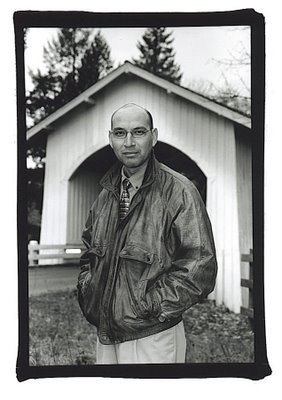When you have completed 95 percent of your journey, you are only halfway there. - Japanese Proverb
It's amazing how a simple song on the radio can magically transport you back to a particular point in your life. All I needed to hear was
Heart and Soul by Huey Lewis and the News and it's 1983 and I'm 22 again and in the best physical shape of my life. I say this because I'm on the road to the (Donner und) Blitzen River for my first solo backpacking trip some 30 years later and considering the size and weight of the pack I'm about to strap on my back, I'm wondering why I didn't try something like this way back then!
For the past three seasons, right around Labor Day, my good friend Gary Zimmerman and I have been camping, fly fishing, and hiking the Blitzen while building a base camp we can return to each year. Our site is about a five mile hike from where we park and my goal was to make it there toting everything I need for a four day trip all alone . . . something much easier imagined than done!
It's no mystery, effective backpacking means minimalism -- you carry only the absolute necessities. But when that list includes a bed, clothing, food, a kitchen, and shelter, not to mention fly fishing and photographic equipment too, the pounds pile up pretty quickly. My load of "bare essentials" had to tip the scales at close to 100, but once I was able to secure the nylon beast to my back, I was off.

The hike proceeded smoothly for the first half mile until I reached a minor roadblock - a small feeder creek I needed to cross. Normally I would just step over the 3 foot divide but not today, I was carrying lots of company, so I stepped into the shallow crevice oblivious to the mayhem about to follow. You see, my foot became stuck in the mud - naturally - and the only way of extracting it seemed to require a flying face-plant on my part on the opposite bank! Embarrassed but undeterred, I removed my glasses and rolled over on my back, grappling with the mammoth hump all the while performing my best impersonation of a foolish turtle. Once the contraption was righted and I was standing erect, I realized something was missing . . . my glasses . . . and that's because they were hidden underneath the backpack when I was pinned to the ground!

Flattened like a tortilla, I lifted my grass-stained spectacles from the trail with a laugh but without a worry -- I can always bend them back into shape and simply continue on my way. After snapping the left temple off the frame, I wasn't laughing anymore and realized I better wait until I unpack my pliers and set-up camp before going any further. Hiking with one hand free and the other firmly affixed to my right temple (so I could see!) plus carrying a couple of bags of cement disguised as a backpack, I trudged on for two more miles - successfully crossing the river three more times I might add - until I spotted an oasis straight ahead. I saw tall Juniper trees that provided shade from the sun and shelter from the wind , as well as, close and easy access to the river and an abundant supply of cold, fast running water. Ripping the giant backpack from my shoulders and hearing it slam on the hard ground, I rejoiced, "I made it! I made it! . . . to Halfway Camp." Repairing my glasses was the next order of business and the first aid kit sure came in handy as all I needed was a band-aid to regain hands-free sight. The drama for today was done, exhausted I passed out under a sea of stars wondering what tomorrow might bring.

That question was answered early and emphatically -- trout, big trout, and lots of them! And I had a revelation: from answering nature's call to balancing, climbing, and searching for food and shelter, all the inhabitants of the high desert - including the guests - share the same struggles everyday and I found some comfort in knowing that.
If football is a game of inches then backpacking has to be measured in microns. It's a strange activity where initial pain is directly proportional to future comfort. But most of all, remember this: the journey is truly the reward and there's no shame in making it halfway as long as you enjoy the experience all the way. Now for the next challenge here: backpacking with my two nephews next month . . . let the saga continue.
Who travels for love finds a thousand miles not longer than one. - Japanese Proverb




































